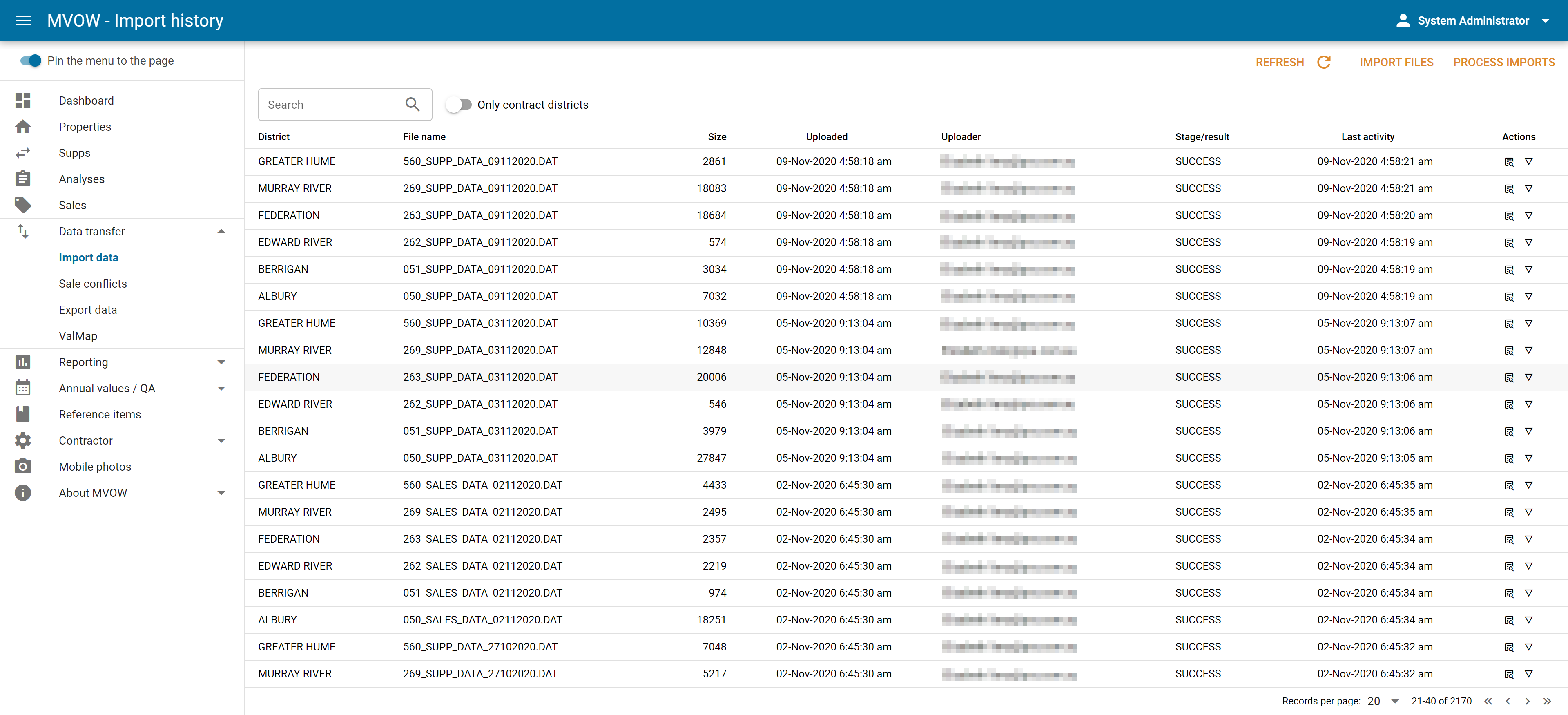Appearance
Navigating MVOW
MVOW is designed to support high productivity for everyone involved in land valuation. Here are some of the key ways you can navigate the application.
Dashboard
On first logging in, you are presented with a dashboard that contains useful data summaries and links to specific sets of data. You can click any of the links in order to jump straight to the data you want to process.
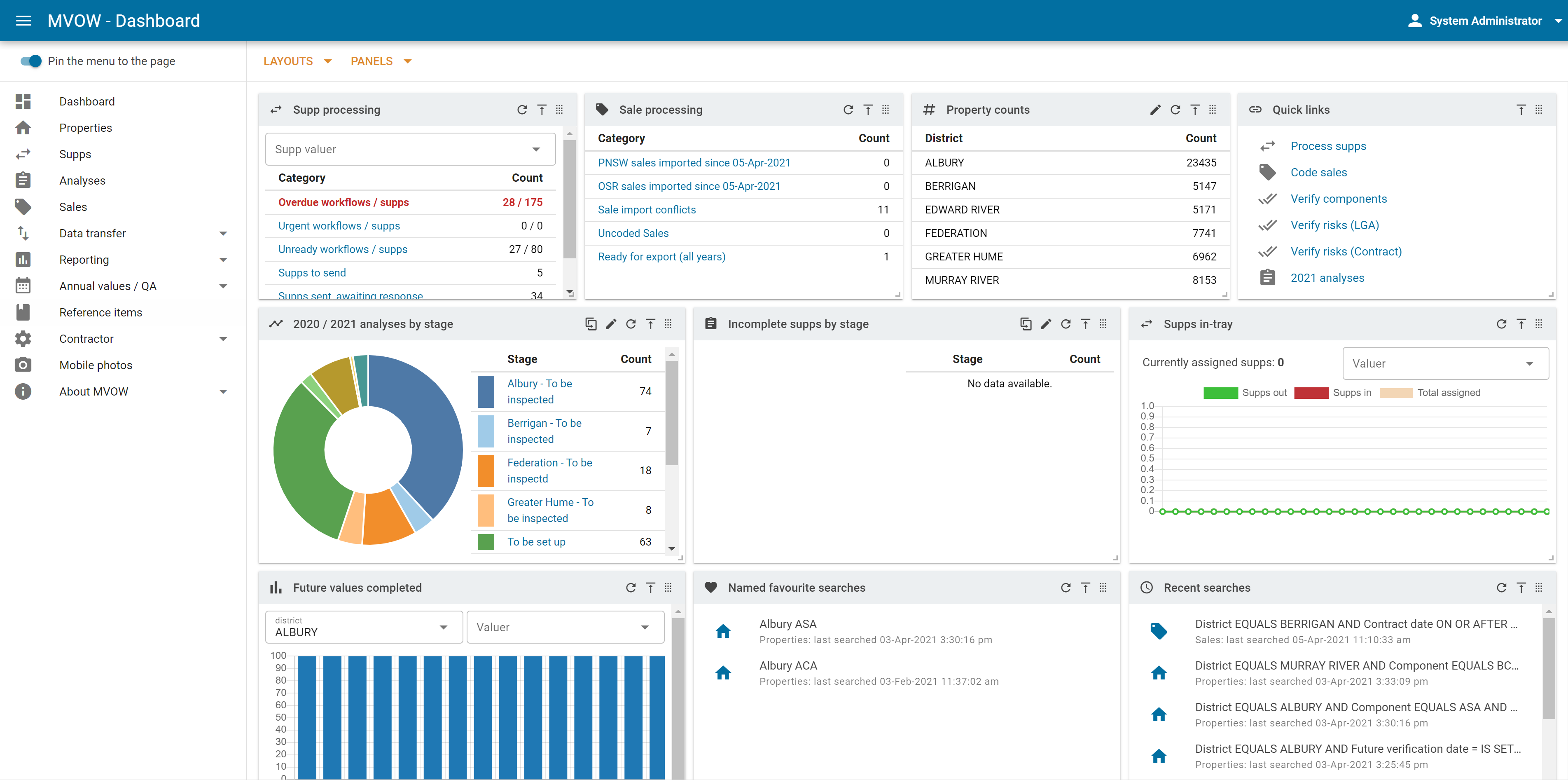
You can instantly see where the processing of properties, supps and sales are up to and leap straight into editing them.
Menus
Menus provide access to both data items and to MVOW functionality.
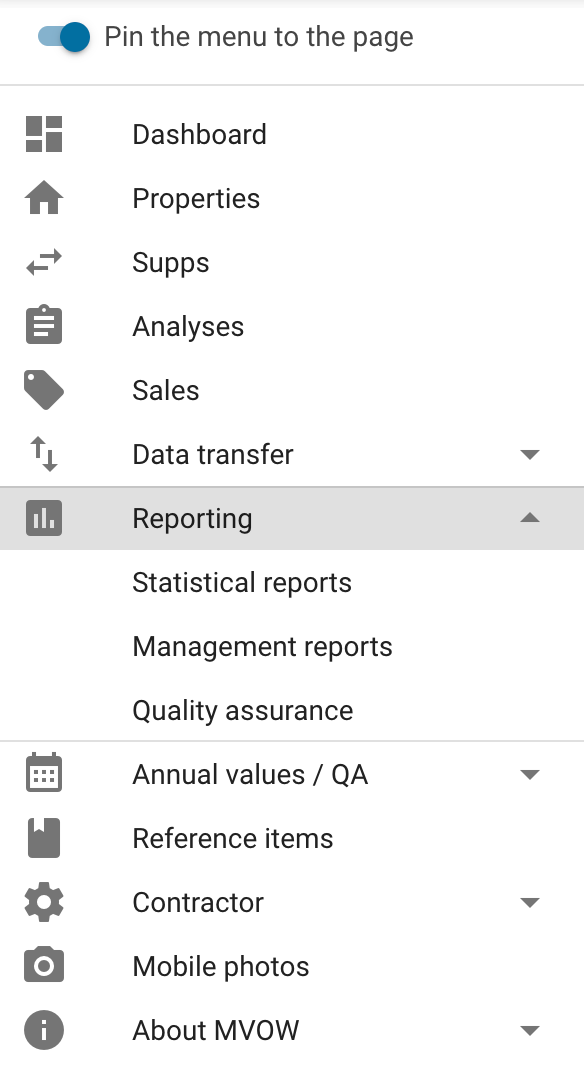
Data items
Menus that provide access to data items are:
- Properties
- Supps
- Analyses
- Sales
Each of these menus allow you to view data items via a search mechanism. Once you perform a search, the subset of data items matching your search query are displayed.
Submenus
Other MVOW menus use submenus. In the menu shown above, the Data transfer submenu is closed and the Reporting submenu is open. Clicking either of these items opens or closes the submenus.
Search
Each of the four data item menus provides four styles of search:
Simple — provides a quick, convenient way to search across the most commonly-used search parameters.
Full — allows you to select from every available parameter to build precisely-defined queries.
Recent — gives you direct access to your most recently-used searches.
Favourite — stores named searches that you intend to use frequently.
Discover much more about searching in Searching in MVOW.
Search results
Search results present the data matching the search query within a powerful table. The search result table provides flexibility to organise, filter, select and perform a host of powerful operations.
To learn how to use search results, see Working with search results.
Note the difference between search tabs and browser tabs.
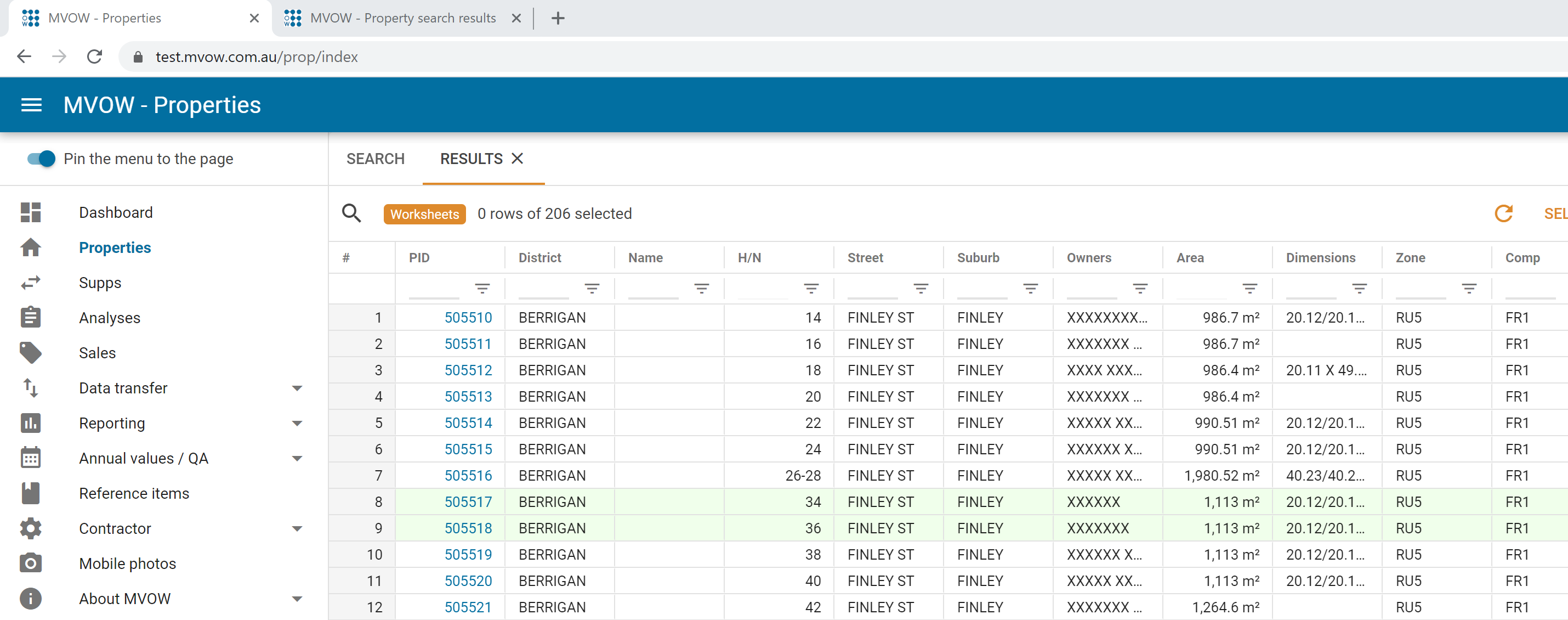
The Search  button opens search results in a search tab (i.e. the tab titled Results), while the Search
button opens search results in a search tab (i.e. the tab titled Results), while the Search  button opens the search results in a new browser tab (i.e. the browser tab titled MVOW - Property search results).
button opens the search results in a new browser tab (i.e. the browser tab titled MVOW - Property search results).
Editing items
MVOW provides three ways to edit data items:
In-place editing — allows you to edit some items directly within the search results table.
Bulk editing — opens a split-screen that allows selection of data items on the left hand side and editing of select properties on the right hand side of the screen.
Opening items — opens one or more data items in new browser tabs so that you can update any data item attribute.
Learn a whole lot more about this with Working with search results.
Flyout menus
There are several flyout menus in MVOW. The most frequently-used flyout menu is the Action  menu in the search results page. You navigate the menus and submenus with mouse-clicks.
menu in the search results page. You navigate the menus and submenus with mouse-clicks.
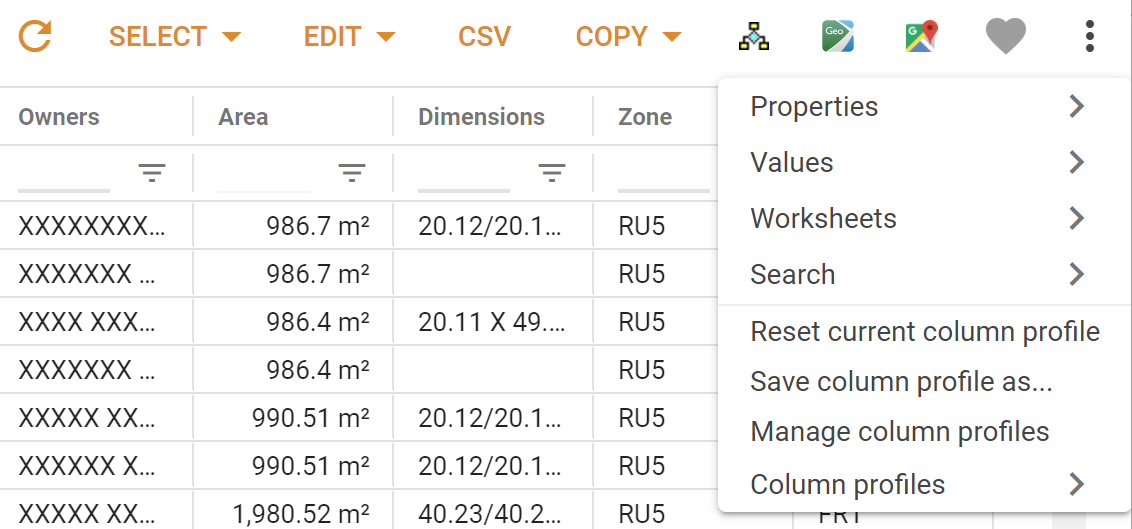
Panels and Layouts
MVOW makes use of panels throughout the application. Wherever panels are used, the panels can be rearranged. You can save arrangements of panels using Layouts.
To learn all about panels and layouts, See Working with panels.
Popup and full-screen dialogs
MVOW uses popup dialogs to provide information or additional options when using many types of commands.
A typical example of a popup dialog is the Statistical summary dialog, which allows you to select the District and Base year for the report you want to run. It also allows you to choose to generate the report for as a Web page, a PDF or CSV file. You can also dismiss the dialog without running the report by choosing Close.
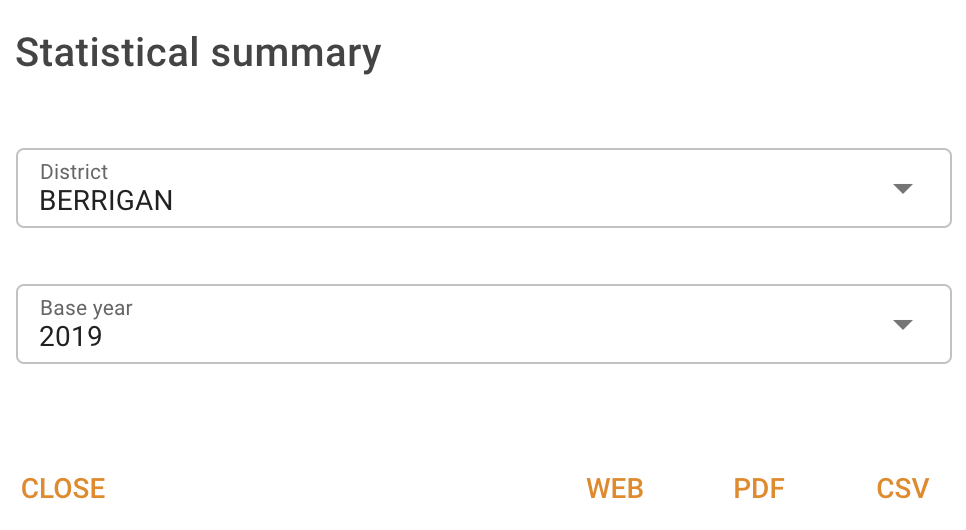
Popups can generally be moved around the page. Click on the title bar and drag the popup to where you want it.
Sometimes dialogs are so large they take up almost the entire page. However, there will always be a visual cue that something is under the popup, and you will still be able to drag it around.
Pagination
Some tables show a fixed number of rows per page. You can navigate between pages using the pagination controls at the bottom of the table.
